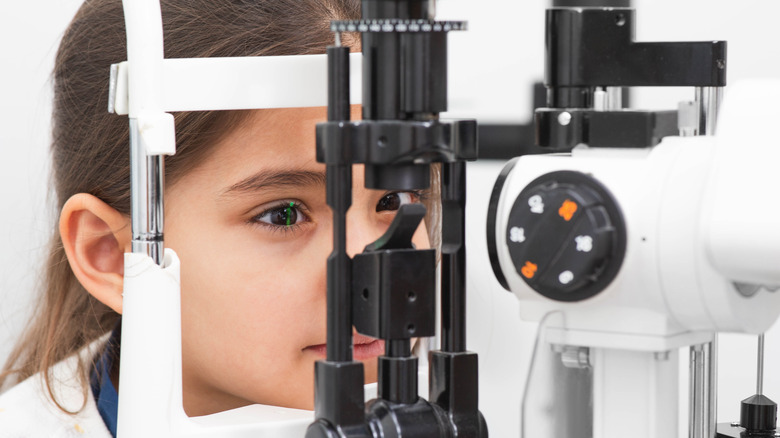What It Means If You Have A Lazy Eye
Lazy eye — also known as amblyopia — is the leading cause of vision loss in children, according to the National Eye Institute (NEI), affecting three out of every 100 children.
These vision problems occur when, over time, the brain starts to rely only on signals from the stronger eye, leading to decreased vision in the weaker eye (via NEI). That is not to say that the condition cannot affect both eyes, it is just an uncommon occurrence.
Stanford Medicine suggests that common symptoms include one eye that may wander or move differently from the other eye, both eyes may turn in opposite directions, a person may need to squint or tilt their head in order to see better, or it maybe be characterized by a drooping upper eyelid. A child with the condition may also become upset when the affected eye is covered. The more obvious signs of amblyopia often develop any time between birth and seven years of age, according to the Mayo Clinic.
The different types of lazy eye
The Mayo Clinic states that strabismus amblyopia is the most common type of lazy eye and is caused by a muscle imbalance, leading to crossed or turned-out eyes. Another form is refractive amblyopia which develops when a person has vastly different vision capabilities in each of their eyes, such as being nearsighted in one and farsighted in the other. Additionally, amblyopia can be a cause of deprivation. Unfortunately, these cases involve a cataract or other blockage in the eye that require immediate intervention to prevent permanent damage.
In order to prevent future vision loss as an adult, treating any kind of amblyopia as a child is important (via NEI). Treatments generally involve covering the stronger eye with an eye patch, which may only be necessary for a couple of hours per day. Additionally, a doctor may prescribe atropine, or medicated eye drops to blur vision in the stronger eye, effectively forcing the weaker eye to work harder. Finally, a doctor may recommend surgery in addition to these above therapies (per Mayo Clinic).


